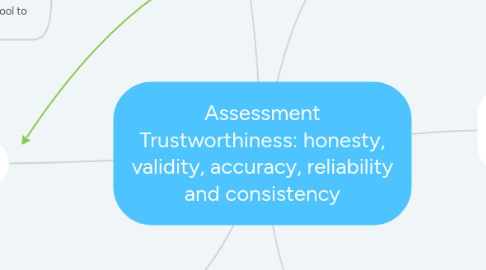Assessment Trustworthiness: honesty, validity, accuracy, reliability and consistency
by Nizar Kilani

1. Validity of testing
1.1. Tests must be designed in relation to English proficiency
1.2. Results of appropriate testing must be used for short and long term planning for a more efficient instruction
1.3. Testing is an aid to teaching, not a tool to identify targets
1.4. Testing is an aid to learning, not a tool to identify targets
2. Reliability
2.1. Recognition of the importance of interactive IT based assessment
2.2. Tests must be bias
2.2.1. Free of sensitive information
2.2.2. Free of personal information
3. Consistency of testing
3.1. Collaborative planning
3.2. Time set aside to prepare pupils prior to testing
4. Amplifying trustworthiness
4.1. Recognition of unreliability of native speakers' testing
4.2. Unreliability of traditional testing material and methods
5. Weighing the positives against the negatives of testing
5.1. Social and academic impact
5.2. Timing of the test
5.3. Testing to better plan and teach
5.4. Pupils focused on passing tests neglecting other aspects of their education
5.5. EAL students often end up sitting more tests than "mainstream" students
6. Fairness to EAL students
6.1. Age appropriate material
6.2. make available translators and bilingual dictionaries when appropriate
6.3. When available, involve L1 speaking staff


